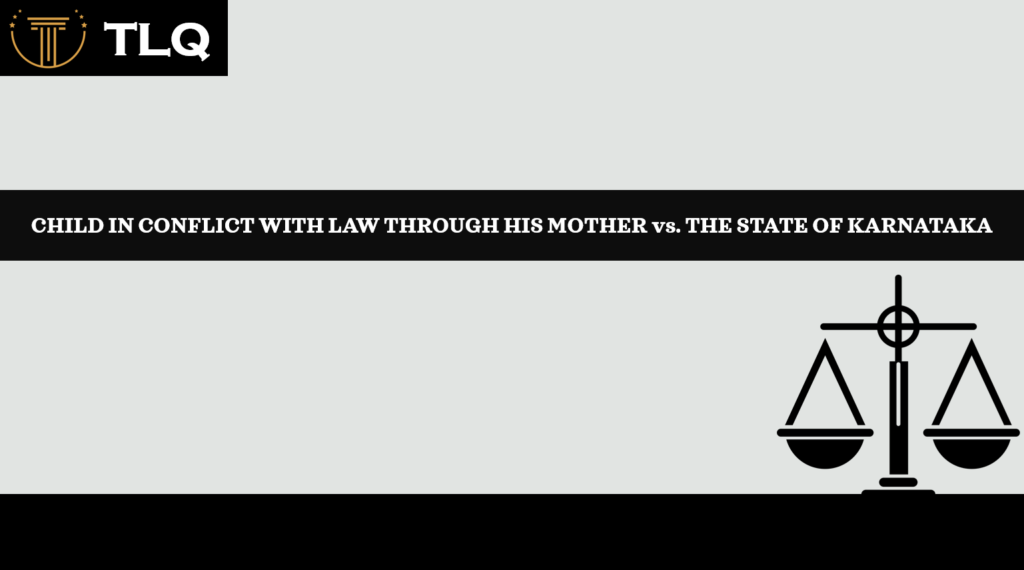Published On: 24th June 2025
Authored By: Anshika Machhiwal
ICFAI Law School, IFHE Hyderabad
FACTS OF THE CASE
In 2017, the petitioner, who is an NRI businessman filed a public interest litigation (PIL) under Article 32 of the Constitution of India challenging the constitutional validity of Section 497 of the Indian Penal Code, 1860 (IPC) and Section 198(2) of Code of Criminal Procedure, 1973 (CrPC) inspired and motivated by the suicide committed by his friend due to the accusations of adultery. [1][2][3]
Section 497 of IPC deals with the offence of adultery “Whoever has sexual intercourse with a person who is and whom he knows or has reason to believe to be the wife of another man, without the consent or connivance of that man, such sexual intercourse not amounting to the offence of rape, is guilty of the offence of adultery, and shall be punished with imprisonment of either description for a term which may extend to five years, or with fine, or with both. In such case the wife shall not be punishable as an abettor.”
Read with: Section 198(2) of CrPC; “No person other than the husband of the woman shall be deemed to be aggrieved by any offence punishable under section 497 or section 498 of the said Code; Provided that in the absence of the husband, some person who had care of the woman on his behalf at the time when such offence was committed may, with the leave of the Court, make a complaint, on his behalf.”
It was challenged on the grounds of being arbitrary, discriminatory, and violative of fundamental rights or Article 14, Article 15 and Article 21 of the Constitution of India as it treats women as an object and incapable of exercising their sexual autonomy by allowing husbands to exercise right on their wife as on a property and disallowing them to file a complaint for the offence. It also discriminates against men by exempting them from punishment and treating only men as offenders.
The case was then heard by a five-judge constitutional bench of the Hon’ble Supreme Court which overruled the previous judgements regarding the issue. The court also aligns the Indian penal laws with the given global standards of gender equality and gender justice.
LEGAL ISSUES RAISED
- Whether section 497 of IPC read with section 198(2) of CrPC violates Article 14, 15 and 21 of the Constitution of India?
- Whether it treats married women as the property of their husband, thereby promoting gender stereotypes infringing their autonomy and dignity?
- Whether these sections promote gender biasness, discrimination towards men and deny them the equal status by exempting women from punishment?
JUDGEMENT OF THE COURT
The Hon’ble Supreme Court, struck down section 497 of IPC and declared it to be unconstitutional on the grounds of arbitrariness, discriminatory and violative of Article 14, 15, 21 of the Constitution of India which criminalizes adultery by punishing only men for having sexual relations with married women. The judgement decriminalized the offence of adultery and set aside previous judgements. [4] In furtherance, the court also struck down section 198(2) of CrPC as unconstitutional to the extent of its applicability to section 497 of IPC.
The court declares the provision as archaic which deprive women of their autonomy, dignity and right to privacy and infringes a women’s right to life and personal liberty as provided in Article 21 of the Constitution of India by undermining the equality in the marriage and imposing penal consequences based on gender-based understanding of the relationship between the parties, as when the husband of the women consents for such sexual intercourse, it will not be regarded as the said offence. The court, here, reaffirmed sexual privacy as the natural right of both the men and the women. The section also undermines the concept of equality as the equal participants in a way as it affirms that they cannot independently consent to a sexual activity and treats them as chattel or a sexual object of their husband, therefore, violating Article 14 of the Constitution of India, and also at the same time promote gender stereotypes and discrimination between a man and a woman, thereby, violating their Article 15 of the Constitution of India.
The court also held that adultery being an offence is the interference with personal lives of the individuals and their matrimonial space reiterating the patriarchal notions by not recognising the autonomy and dignity of women in a way where their sexual privacy, sexual freedom and control in given the hands of their husband. It also mentioned about the case of Navtej Singh Johar vs. Union of India for upholding the importance of the sexual autonomy of the individual as here being an offence interfering an individual’s personal space and diminishing their sexual privacy. [5] The court also referred to the case of K.S. Puttaswamy vs. Union of India in order to emphasize on the equal status of women in a marriage and to be entitled with the constitutional guarantees and privacy.[6]
The court also emphasized on the discrimination towards men henceforth, promoting gender bias by treating only them as offenders and exempting women from the punishment regardless of their voluntary participation in the offence.
The court, therefore, by striking down section 497 of IPC, decriminalizes adultery being a criminal offence against public and society, whereas, it still remained as a civil wrong and a valid ground of divorce under the civil laws and personal laws of India where any of the spouse can file complaint against the wrongdoer irrespective of the gender and the innocent party will get justice accordingly, as to maintain their privacy.
IMPACT OF THE CASE
Adultery which is defined as “the sexual intercourse by a man with the wife of another without the consent of her husband” had been recognized as a marital fidelity in the past and subsequently embedded in the legal framework of India under section 497 of IPC, 1860 and continues to stay for 158 years which institutionalized gender inequality by exempting women from being punished and treating wives as chattel or sexual object of their husbands with their sexual privacy, sexual freedom, dignity and autonomy in their hands and claiming them as their properties being the only one to file complaint against this offence as against the interference by anyone with their property, thereby promoting the patriarchal notions of controlling wives and claiming ownership as on a property.
Whereas, in the case of Joseph Shine vs Union of India, when the Hon’ble Supreme Court struck down section 497 of IPC along with section 198(2) of CrPC to the extent of its application on section 497 of IPC as unconstitutional on the grounds of being violative of article 14 of the Constitution of India due to arbitrariness and gender based classifications, violative of article 15 of the Constitution of India due to unjustifiable distinctions on the basis of sex, and violative of article 21 of the Constitution of India by denying women their personal liberty, dignity and sexual autonomy, freedom and dignity, and treating women as the property of their husbands. [7]
Where the court also emphasized on it being an interference on an individual’s private life specifically when it violated the fundamental rights of an individual as provided in the Constitution of India, therefore, as of now, it is being observed as a civil wrong and a ground for divorce under civil laws and personal laws.
This judgement left a significant impact and set a milestone in India’s legal and constitutional evolution and transformation. The judgement reshaped the understanding of the society, legislators and judiciary regarding marital relationships, privacy, autonomy and dignity in this new constitutional democracy by rejecting the patriarchal notions of controlling, possessing and exercising like a master on his property. Through this judgement, the court recognized and gave marriage the meaning of equal partnership and partnership instead of ownership where both the parties have a right to be respected, right to have privacy, right to have freedom and autonomy, right to have dignity, and the right to have sexual freedom and make choices. Wherein both men and women must be treated as equal parties to the marriages and equal individuals under the law and in a matrimonial household.
The ruling created a milestone by making a move away from the state and public intrusion or interference into the personal space and private household and relations of an individual where a personal can make consensual relationships. It also brought the Indian criminal law in alignment with the global human rights and equality standards which strengthened the constitutional values of gender justice, personal and individual liberty, and equality.
It sets an innovative and reformative precedent which removed the gender stereotypes and discrimination on the ground of sex, and lays down the groundwork for re-evaluating other laws which promote such inequality, discrimination and curtail freedom of any particular gender.
By categorizing it as a civil offence, where any of the spouse can take action irrespective of gender. Under certain personal laws, it is being provided as a ground for divorce in order to provide remedy to either of the spouse against the act. It respects the personal boundaries of an individual and restrict the matter to their matrimonial house instead of treating it as a criminal offence. Also, with this, the offence emerged as gender neutral where any of the party irrespective of gender can file complaint and accordingly, irrespective of the gender, the wrongdoer will be held liable.
The judgement is not only a rejection of an archaic adultery law, but also a powerful affirmation of an individual’s dignity, freedom, autonomy and also on gender equality and discrimination. The Hon’ble Supreme Court, as in this case, decriminalized adultery, acknowledged that equality before law cannot hand exist in hand with such gender-based discrepancies. The case represents a major milestone in India’s journey towards an equitable legal system.
With the dynamic nature of the society, so as the laws not to be based on the outdated and obsolete gender roles, it pushed for the need of gender-neutral legal framework where without any discrimination and objectification of women as not to treat them as property of anyone. The court clarified the marriage as equal participation and emphasized on re-examining the other discriminatory laws thereby promoting the constitutional guarantees and freedoms to everyone.
Therefore, this judgement is landmark being the foundation for the reforms of personal laws and deepening India’s commitment to gender neutrality, justice and the availability of equal rights in both public and private spheres of an individual’s life.
Reference(s):
[1] India Const. art. 32, https://indiankanoon.org/doc/981147/
[2] Indian Penal Code § 497 https://indiankanoon.org/doc/1833006/
[3] Code of Criminal Procedure § 198(2), https://indiankanoon.org/doc/289904/
[4] Joseph Shine v. Union of India, (2019) 3 S.C.C. 39, AIR 2018 S.C. 4898, available at https://nluwebsite.s3.ap-south-1.amazonaws.com/uploads/joseph-shine-vs-union-of-india-uoi-5.pdf
[5] Navtej Singh Johar v. Union of India, (2018) 10 SCC 1, AIR 2018 SC 4321, available at https://indiankanoon.org/doc/168671544/
[6] K.S. Puttaswamy v. Union of India, (2017) 10 SCC 1, AIR 2017 SC 4161, available at https://indiankanoon.org/doc/127517806/
[7] Joseph Shine Vs. Union of India (2018) 11 S.C.R. 765




